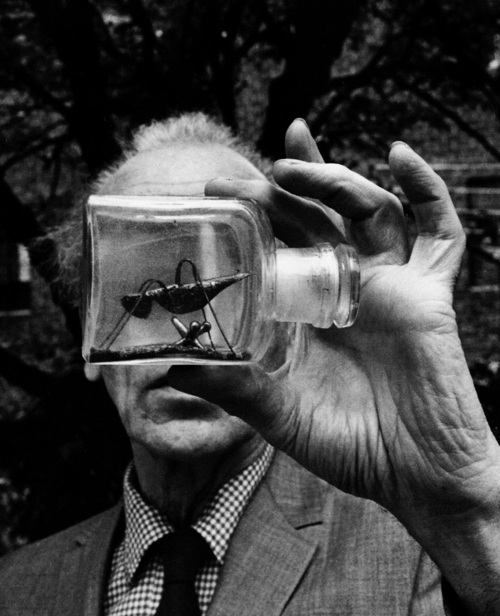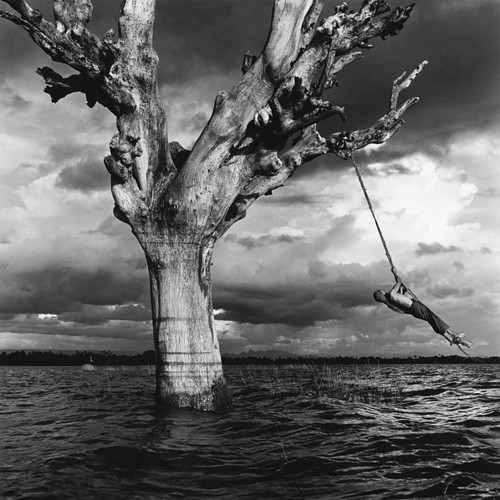Notes on a talk by Michael Stone at Centre of Gravity, February 25, 2013
Celeste
Celeste wrote an email that I’d like to excerpt. It goes like this: “I had a question I was hoping you could shed some light on. In the text I feel like Shantideva is saying, in so many words, emotions are an illusion that don’t serve us. They cause us tremendous suffering so we “dispel them within our hearts and strive for wisdom instead.” You explained in your interpretation that emotions are actually conditions that motivate us to act. The emotions may be illusions, but they are motivating illusions. Just gaining distance from them doesn’t really make us engaged in the world.
My question is: does Shantideva ever acknowledge this about emotions (that they actually serve a purpose) or is this your lens on the text? My assumption is the latter, because I’m not reading that Shantideva explains how emotions serve us, only that they cause us to suffer and that they are not real.”
Guarding Alertness
Chapter Five of A Guide to the Bodhisattva’s Way of Life is called Guarding Alertness (sometimes translated as “Discipline”). It starts like this:
Those who wish to guard their practice
Should very attentively guard their minds,
For those who do not guard their minds
Will be unable to guard their practice.
In this (world), unsubdued and crazed elephants
Are incapable of causing such harms
As the miseries of the deepest hell,
Which can be caused by the unleashed elephant of my mind.
Crush
What is “the unleashed elephant of my mind?” Untamed is wild, and elephants crush. There’s part of the mind that crushes others. Have you ever been in a position of power over someone you didn’t like and you used that power to crush them? Or perhaps you’ve been on the other end – receiving someone else’s power, being crushed by them? Perhaps someone has crushed your treasures, your kindness and creativity. The unleashed elephant means being out of control. How can we work with the elephant? We work and practice with discipline. Practice means repetition, returning again and again to this moment. And this practice requires discipline.
In the Mahayana practice we do here at Gravity, discipline is infused with bodhi citta. We want to alleviate our own suffering, as well as the pain of others. We might work with aggression, prejudice – there’s so many places of suffering. What is in my heart? We need to tame our mind in order to work with what is in our heart. Our practice predisposes us to a life of awakening along with the larger intention to serve. How do we serve? We start by working with our mind. If we are triggered easily then we can’t be mindful. We want to be able to enter explosive situations and not escalate them. Steadiness is contagious. If you spend time with someone who is steady it rubs off.
Vietnam
from Wikipedia: After the Vietnam War, many people in Cambodia, Laos, and especially Vietnam became refugees in the late 1970s and 1980s, after the fall of Saigon. In Vietnam, the new communist government sent many people who supported the old government in the South to “re-education camps”, and others to “new economic zones”… In 1979, Vietnam was at war with China. The Vietnamese government forced the entire ethnic Chinese community to perform slave labor in the jungle with minimal food or to leave the country; the majority of Chinese, who lived in the south, had no way to escape except on the open seas. On the open seas, the boat people had to face deadly storms, diseases and starvation, and elude pirates. According to the United Nations High Commission for Refugees, between 200,000 and 400,000 boat people died at sea.”
Can you imagine leaving behind everything you know in order to board one of these boats? So many died. The boats became targets of Thai pirates, and many who were not killed were raped, beaten, robbed. Thich Nhat Hanh reports that the way people survived in the boats was that if one person was steady, it became contagious.
Moods
Imagine your household is a boat. When you come down for breakfast, your mood is contagious. If you wake up in a black mood, or as a cloud that’s almost dynamite, it affects everyone. Do you indulge your moods? Which ones? When you come here to the Centre of Gravity, this sangha is a boat, and your mood is contagious. Perhaps we can come here and work with our moods, really dig into them and see what they’re made of. What is a mood made of? Hormones, diet and emails. Then your boat can be the whole city. Your mood can help de-escalate conflict, and help you to value kindness and beauty. Moods can often arrive uninvited, it’s important not to turn them against yourself or pretend they’re not happening because you’re so busy following the breath. But negative emotional mood swings can’t hold together long without thoughts. You have to inject stories into negative mental states in order to keep them afloat. Otherwise they’re just patterns of sensation that don’t last long. Moods are as seductive as sugar, caffeine and heroin. Moods are an addiction. So how do you stop the storylines from becoming more solid? Shantideva calls this discipline.
SAIN
Last week we spoke about how to deal with difficult emotions. We used the acronym SAIN (in French it means health): Stop, Accept, Investigate, Non-Identification. Stop means recognizing that there’s a mood. Maybe you want to label it. Accept means allowing the mood to be there, instead of pushing it away, or allowing it to overtake you. Investigate means going into the body and seeing where the sensations are. What are the exact physical sensations and where are they? Non-identification is about becoming the energy, but not identifying with the energy. This is a practice that can be done anytime, you don’t have to wait for a tsunami of emotion to strike. In fact, without the preparation and steady practice in working with “smaller” moods, it’s hard to deal with the big swings.
Anger
Our culture is infatuated with anger. Thich Nhat Hanh observes that “Americans cannot speak about anger, and how to handle our anger, without paying attention to all the things that we consume, because anger is not separate from those things.” Anger is a composite of conditions. It’s a contingently arising phenomena.
So on the one hand you have examples like Thubten Chodron who was perplexed after meeting a group of mediators who claimed that “anger was necessary and beneficial because it gives information about what is wrong. Avoiding anger does not give mediating parties the ability to reach the real issues at hand.” (Thubten Chodron, Working with Anger, p. 33)
Release
On the other hand we have Freud’s “hydraulic theory.” His pictures were almost always mechanical. Anger builds up in us like hydraulic pressure. It has to be released. Trying to overcome anger, from a Freudian perspective, is like trying to stop the sunset. This is a picture of anger that is widely accepted in our culture.
In his influential book Emotional Intelligence, Daniel Goleman counters that “ventilating anger is one of the worst ways to cool down: outbursts of rage typically pump up the emotional brain’s arousal, leaving people feeling more angry, not less.” So the problem with anger is that it distorts, it creates a lot of heat that bends the light waves. It blurs our ability to be clear. If you meet someone who triggers you and become angry and express it, this event can become a symbol of an entire relationship. It is a moment that takes on a disproportionate amount of importance. It’s a way of inflating a moment, and this isn’t clarifying.
Thich Nhat Hanh says “Venting our anger is a practice based on ignorance. When you imagine the object of your anger as a pillow, hitting the object of your hate, you rehearse ignorance and anger. People who engage in this feed the roots of their anger by rehearsing it.” I disagree. If mindfulness means being present for what’s going on around us, surely we can express anger in a safe place and see its effects.
Riding the Wave
So here’s what I do, I call it Riding the Wave practice. Gil Frondsal calls it “riding out the desire. This is good for people who have addiction issues or it could be anything. Wait till you have a really strong, juicy desire, and when that time comes, sit down in a chair and don’t give into it, ride it out. All the lawyers of the mind come out and will explain why you have to go do something, and you quiet the lawyers, and then the publicists come out, the commercials come out, and all this tremendous surge of energy, this tremendous compulsion, really powerful, but you’re committed like being at the rodeo, you’re not going to fall off your horse, and sooner or later, it’s guaranteed, the wave will kind of crest and you’ll find yourself on the other side. And you’ll get calm eventually. And the people I’ve known who have hung in there through a really good wave, and watched it come to the other side, have felt so empowered in their life. ‘Wow, I can be stronger than my addiction, than these very strong emotions. I can learn how to breathe through it, how to be present for it.’”
Moments
If we can experience anger as a composite of conditions that arise and pass away instead of a thing that we own, then it doesn’t have to overcome us. How to get to a point in practice so that you can ride the arising and falling of an emotion as it happens, moment to moment? Sakyong Mipham writes that with mindfulness “an emotion that feels as big as a house can be dismantled brick by brick.” Instead of being led by emotion, instead of the emotion being the dance partner lead, can you plunge into the body and note the sensations, and feel the sensations are, and be curious about experience. What is happening now? And again: what is happening now, in this moment? Can you note the changes and find the roots of your experience?
When I get a hot email, something that really makes my temperature rise, I don’t answer right away. I wait. It’s burning a hole in my inbox but it’s important to leave it there. I create a space between the feeling and this thing I call myself. And this space gives me choices, it offers me freedom to act in different ways. The act of waiting is the heart of the practice of non-harming.
Depress
Emotions are precious material for practice. For people who are under-expressers, when they feel anger it might get internalized as depression. It doesn’t go out as a shout, it goes in as depression. This is a way of not being embodied, of stepping away from strong emotions because they feel too dangerous. When this procedure happens in spiritual communities it’s called spiritual bypassing – instead of dealing with my emotions I’ll sit on a cushion and meditate until they go away and then I can stop feeling anything at all.
The Dalai Lama writes, “get at the root, appreciating the causal nexus, the chain, that would then ultimately explode in an emotional state like anger, (in the hopes of) stopping it at an early stage.” Taking apart anger does not destroy anger. Taking apart anger, following it moment by moment, is about confronting the fact that it isn’t a thing, it doesn’t really exist as a thing. The practice of working with emotions is to see how our triggers work (no matter how much the empire is torturing you) and that the emotion isn’t a solid separate thing. The practice allows us to see through anger, to see its mental mechanics.
When you get angry where does the heat go? Does the energy flow into your hands (fight) or into your legs (flight)?
Imagination
The other aspect we need to work with anger is imagination. What are we without imagination? Yes, maybe there is a science to relieving stress. And it’s medicinal. But it’s an art too. It requires imagination. Superficially imagination is a distracted mind. But when we’re calm we have access to a deeper imagination that allows us to shift viewpoints. To work deeply with strong emotions you have to have deep imagination, to see many points of view. Our intention is to develop a better imagination that can hold and investigate the processes we call emotions. This allows for a life of bodhi citta – it allows for an awakening of your life, your community, your city.
Peace Making
Ghandi practised non-violence to overthrow colonial British rule. His primary strategy was non-compliance, non-co-operation. Not going along. Perhaps in working with emotions we won’t go along with them. We create space, and that space can make peace. My first meditation teacher often said, “Put on your radar, not your armour.” When you’re sitting the breath is the radar, it picks up emotion, and then you can practice with it.






